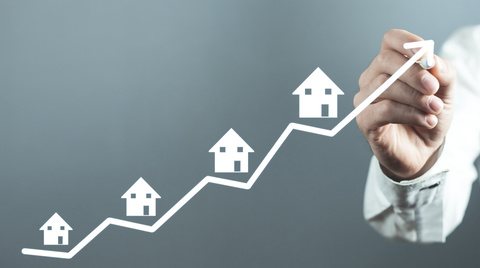Homeowners keep their properties for an average 23 years and new research shows a lot can change with house prices across two decades.
New research shows how much homes have risen in value since 2000 – and highlight the house price hotspots where homeowners have gained the most.
On average, a property bought in 2000 has increased in value by £96,979 or three times the average salary.
Other key findings reveal:
- The average property price has risen 78% across the UK’s largest cities
- Manchester has outperformed the rest of the country with an astonishing 143% boost in average home prices
- Landlords have seen terraced house values surge by an average 96% over 20 years
- London has seen prices jump an average 95%, followed by Yorkshire and the East Midlands, where values are an average 87% up
The data is based on analysis of Land Registry home sale and price information.
Contents
Top 10 cities with the biggest rising property values
Manchester is miles ahead of any other city when measuring how much average property prices have increased between 2000 and 2020, according to the study by lender Ocean Finance.
House prices in the northern powerhouse city have soared 143% or £105,627 in that time – which in money terms means an average value of £179,537 in 2020, compared with £73,910 two decades ago.
The other property hotspot is Leicester.
The East Midlands city has seen average house prices zoom 132% from £82,118 in 2000 to £190,440 in 2020.
Five other cities have posted 100%+ price rises – Southend-on-Sea (117%); City of London (116%); Bristol (112%); Kingston-Upon-Hull (102%) and Cambridge (101%).
Also making the cut for top 10 are Brighton (98%); Derby (96%) and Coventry (95%).
Best cities for returns on property investments
The report contradicts some popular assumptions about property values.
Although popular with investors because property is often cheaper to buy, the North East has the lowest average property price increase in the country since 2000 – just 55%.
The study concludes demand from buyers is lower than perceived, which keeps a lid firmly on prices rising too fast.
But home prices are rising faster in the north and midlands than in the south east and south west, which are traditionally regarded as more expensive areas. The data shows over two decades, prices have gone up at a slower rate in the south than the north.
Here’s a table showing how prices have fared across the regions since 2000:
| Rank | Region | Price increase 2000 – 2020 | Average price August 2020 |
| 1 | Greater London | 95% | £485,159 |
| 2 | East Midlands | 87% | £202,345 |
| Yorkshire & The Humber | 87% | £170,025 | |
| 3 | North West | 86% | £173,617 |
| 4 | East of England | 85% | £296,411 |
| 5 | Wales | 84% | £172,828 |
| 6 | Scotland | 77% | – |
| 7 | West Midlands | 76% | £204,886 |
| 8 | South West | 70% | £264,886 |
| 9 | South East | 64% | £332,147 |
| 10 | North East | 55% | £131,701 |
Source: Ocean Finance & Office for National Statistics
Small is best for investors
Prices rises for terraced homes are streets ahead of the increase in value for other types of home.
On average, values of terraced houses have shot up 96% since 2000, while other property types have seen significant but lower increases:
| Property type | Increase in value | Average property price |
| Terraced | 96% | £208,302 |
| Semi-detached | 84% | £243,887 |
| Detached | 70% | £391,480 |
| Flat | 69% | £223,900 |
| All types | £256,109 |
Source: Ocean Finance and Office for National Statistics
Homeowners with a negative attitude
Separate research by mortgage lender The Halifax claims fewer homeowners believe the value of their homes increased in November.
Just 14% think their home value is rising – with one in four expecting the price to rise over the next 12 months, compared to one in five who feel prices will fall.
Renters were asked what is stopping them buying a home of their own, with 67% citing a lack of savings, not earning enough (55%) and a poor credit history (26%).
Nevertheless, 8% plan to buy a home in 2021; 13% will wait between two and five years to buy, while 14% are resigned to put off the purchase for between five and 10 years.
Expectations differ between age groups, with 13% of those aged 25 to 34 years old planning to buy in the year, compared with 6% aged 18 to 24 years old and 3% aged between 55 and 64 years old.
National park boost for house prices
Building society Nationwide has posted data showing that buying a home in a national park comes with a 20% price premium compared with the value of an identical home outside a park.
In monetary terms, that 20% is worth £45,000 to homeowners.
Living within 5 kms of a national park also comes with a premium of 6% on property values or £13,000 in cash.
Andrew Harvey, Nationwide’s Senior Economist, said: “National parks are often seen as highly desirable places and indeed creating new ones will undoubtedly benefit the wider environment by helping to preserve some of the country’s most iconic landscapes and the accompanying wildlife.
“However, creating new national parks could also come with a price for an increasing number of homebuyers and sellers as our latest analysis suggests that houses in national parks attract a £45,000 premium over similar property elsewhere in the country.”
More information
We have pages with more article on investing in property for England and Wales.




